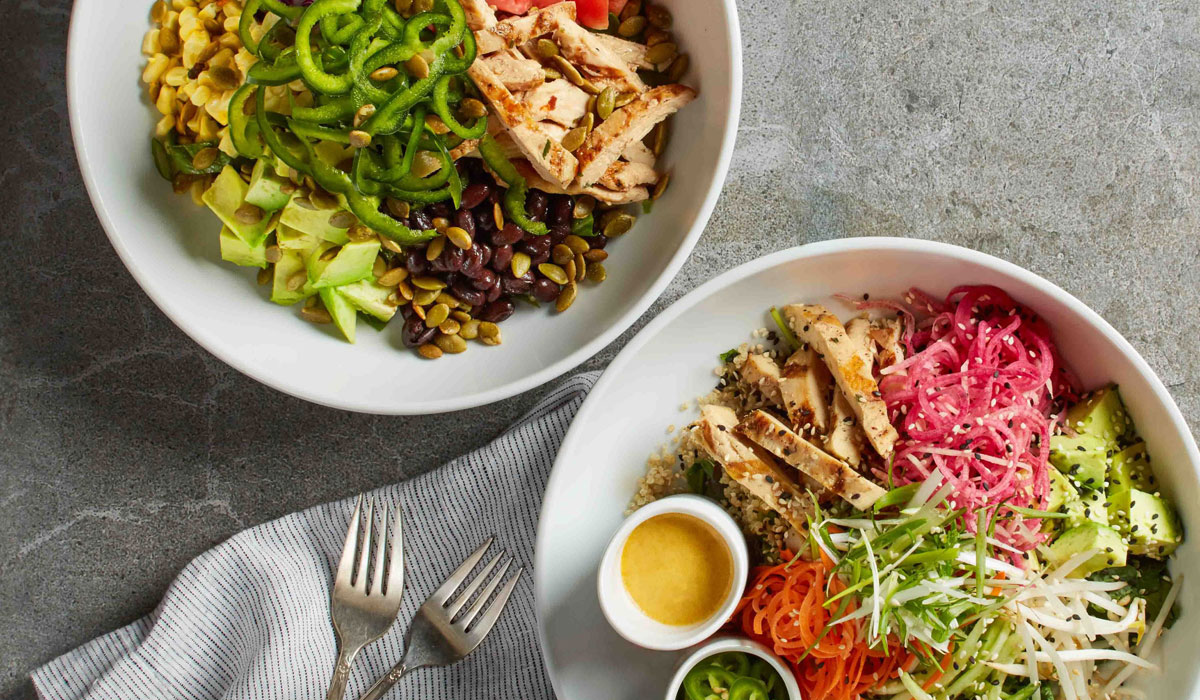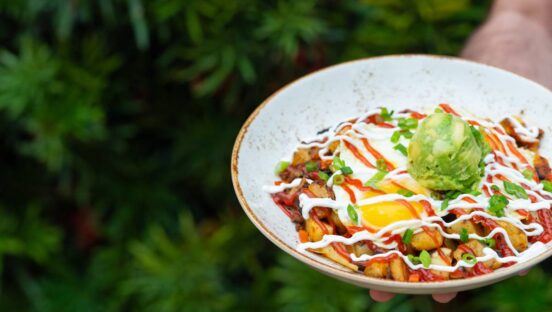








Starbucks kicked off earnings season in earnest Thursday with a first-quarter report that underwhelmed investors. But, a day earlier, the chain announced that it’s planning to invest $250 million from tax reform savings into its workforce—a move similar to the one Darden made a couple of weeks back. As we head into these financial reports over the next month or so, President Donald Trump’s sweeping tax changes will continue to play a role in how corporations around the country draw up potential goals. This includes restaurant chains of all sizes. Given the labor issues, it seems to me that making an investment in employees is a great way to inspire retention in a world where loyalty is about as common as guests being honest on Yelp.
Here were the biggest stories of the past week.
Trying to define a chain as “emerging” can be tricky. Deciding which brands are getting it done financially, however, is a lot clearer. For the most part. Here is a look at 12 brands of varying sizes, histories, and potential growth. What they do have in common is robust average unit volumes. It starts with a chain making $14.4 million per store. These brands, no matter how you look at it, are poised for success in 2018 and beyond. Pictured is Thirsty Lion.
It is becoming less and less surprising to see full-service brands test a counter-service concept. Is it often effective? That’s another debate. In this case, though, Quaker Steak & Lube’s decision to debut an Express unit caught the attention of readers. The chain was founded in 1974 and has experienced its share of ups and downs over the decades. Notably, a bankruptcy proceeding back in 2016 where the chain also announced it was being purchased by TA, a division of TravelCenters of America. That turned out to be a perfect fit. Not only has the full-service side reignited, but also TA decided to build this Express model to offer some versatility for future growth. It features a pared-down menu but all of the favorites. Yes, there are wings.
Jim Hyatt was part of Ruby Tuesday’s recent sale to NRD Capital. As is often the case, the changes ushered in new leadership (Ray Blanchette, former of Au Bon Pain and Ignite Restaurant Group took over). Hyatt landed on his feet quickly, taking the CEO role at California Pizza Kitchen. The former Burger King executive, who spent 32 years with the fast-food giant and was also once CEO of Church’s Chicken and Cosi Inc, took over for retiring G.J. Hart. Hyatt has four decades of experience in the industry and should be a great leader for the 300-unit pizza chain.
Somebody asked me after I wrote this if Burger King could actually be referred to as “sleeping.” That’s pretty much the entire point. If you look at companies taking advantage of technology initiatives, Burger King isn’t on the radar. It doesn’t have a delivery program. Guests can’t pay through the app. Kiosks aren’t really a thing. Meanwhile, McDonald’s has delivery is more than 8,000 restaurants. Taco Bell is testing kiosks and plans to expand delivery. Wendy’s offers delivery nationwide through DoorDash. Panera is a digital monster and just recently said it plans to hire 10,000 employees to bring its food to guests. So the question is, what happens when Burger King catches up? The answer could be scary for competitors.
It’s interesting to think that back in the 1980s and 90s Shoney’s had more than 1,000 units scattered across the country. After filing for Chapter 11 bankruptcy protection in 2011, the chain eventually dropped below 300 restaurants. Yet in recent years you’ve heard grumblings that Shoney’s is getting ready to expand again. David Davoudpour, who was the founder and CEO of the largest Church’s Chicken franchisee company, came on 11 years ago and has slowly set the chain back on the right track. He seems to really bleed Shoney’s, which is exactly what the brand needed. Not only that, but his vision, which includes a new prototype, is starting to take hold with new openings and real results.
MDonald’s is set to report its latest financial quarter on January 30. This is always a blockbuster release for investors, competitors, and everyone else in the business. The reason is obvious: McDonald’s is so big that its progress shifts the weight of the entire industry. When they make changes, others follow. Beforehand, Nomura Instinet analyst Mark Kalinowski polled 26 domestic franchisees to get the pulse of the business. Some interesting notes emerged. There are operators pleased with the recent changes, including new store designs and a fresh $1 $2 $3 value menu, and there are those who think it will hurt the brand long-term. Here’s my take: If you said this new menu and some recent innovations will hurt five years from now, you would probably be right to some respect. But take a look at McDonald’s five years ago, and let’s see what plans panned out and which sprung out of thin air. I just can’t imagine nothing changing between now and then, whenever then might be. If the menu really hurts operators, McDonald’s has all the right to blow it up and do something totally unexpected, like test the infamous Arch burger again. Who really knows what’s in store. For now, the comps are great and investors are thrilled. There are worse places to be.
According to data from statista.com, the gift card industry is expected to represent a $160 billion market in 2018. Restaurants play a big role in that. I think this is especially true in casual dining. I know I have received countless Red Lobster gift cards from relatives over the years. I don’t really know how relevant this will be in quick service in the future, which is maybe why the rankings were so full service top heavy. There is simply more at stake for casual brands, and thus they invest more resources into systems. Either way, in yet another category, Texas Roadhouse came out on top. Texas Roadhouse is a chain that truly gets its core customer and reacts accordingly.
As mentioned earlier, Starbucks is putting some $250 million from tax reform savings back into its workforce. This includes Partner and Family Sick Time, wage increases, stock investments, and more. It’s an impressive and extensive list that affects over 150,000 employees. Kudos to the java. In the coming months, expect others to follow suit. Recently, Brinker announced a no-cost education program for employees. The labor market is so tight companies will soon have to offer incentives to compete (if that moment isn’t here already). That’s a great thing for workers and it should benefit the industry as a whole. Longer-term employees result in better customer service and execution. There are few things worse than constantly rotating employees who a. don’t want to be there, and b. have no idea what they’re doing.










